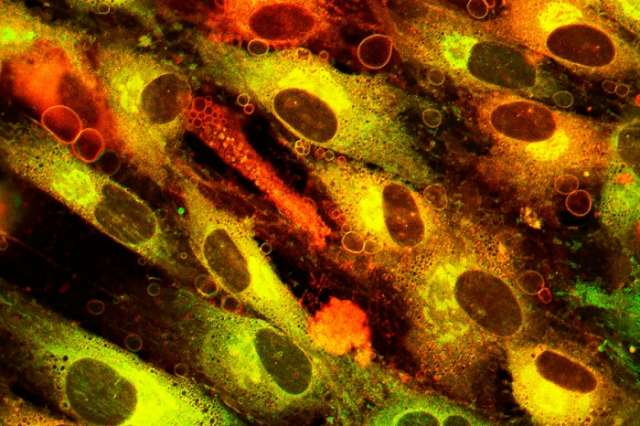Surprised by these day-night changes in gene activity, the team decided to analyse data collected by a specialist burn injuries unit at the University of Manchester, UK. They found that, on average, daytime wounds healed much faster – in only 17 days, compared with 28 days for similar burns sustained at night.
“We found that how well you heal depends on what time of the day you’re injured,” says Hoyle. “Healing in the day can occur 60-per-cent faster.”
Cells on the move
Following a cut to the skin, fibroblast cells rush to the wound and secrete a matrix that helps skin cells move into place, grow, and heal the injury. Before turning to the burns data, the team first discovered in experiments with mouse tissue that fibroblasts arrive at the site of a new wound twice as quickly during a mouse’s usual waking period than during its sleep period.
This seems to be because a group of around 30 genes are more active during waking hours. These genes all help control actin, a protein used by fibroblast cells to move.
Hoyle’s team think healing may be linked to circadian rhythm in mammals because we’re more likely to be injured during the active part of our day. The finding might be useful medically, says Hoyle. If drugs can fool injury sites into a “daytime” status, they might heal more quickly, for example.
“This research adds to the accumulating evidence that ‘time of day’ or ‘circadian rhythmicity’ matters in medicine,” says Derk-Jan Dijk, of the University of Surrey, UK. “The question is how we can make use of this knowledge, and whether it can change clinical practice and help patients.”
More about: #science
















































